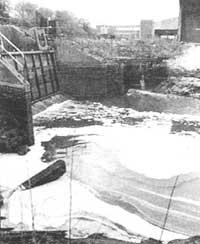Pollution as fuel
In the future it will be possible to clean dirty water containing chlorinated hydrocarbons and obtain hydrogen simultaneously.
Over the years, chemists have been pursuing the low cost of hydrogen by water hydrolization. Hydrogen would replace fossil fuels in many uses. Most tested pathways have resulted in collateral reactions that paralyzed the process in a few hours.

To achieve water hydrolysis, that is, the separation of water into its two components (hydrogen and oxygen), light is intended as a source of energy.
If in the light there is enough energy to hydrolyze the water, but the water is transparent to the light, so the light passes without producing anything. However, if substances called sensitizers are added to the water, hydrolysis is achieved. These sensitizers absorb some of the light energy and get excited electronically. Excited sensitizers react with water forming very reactive intermediate products. Theoretically, these intermediate products, before reacting to each other, find a platinum catalyst and begin to form hydrogen.
In practice it is not so and these intermediate products react with the sensitizer and deteriorate it. Light also impairs part of the sensitizer. Consequently, in a few hours the system does not generate more hydrogen and the photosensor needs to be renewed. This prevents commercial use of costs.
This London group has proposed the use as photosensitizers of substances (organic sulphides, ures, phenols and chlorinated hydrocarbons) found in contaminated waters. The cost of the process would be greatly reduced.
Buletina
Bidali zure helbide elektronikoa eta jaso asteroko buletina zure sarrera-ontzian











